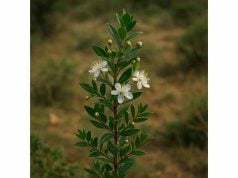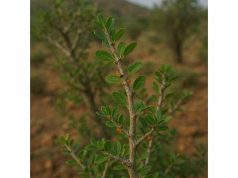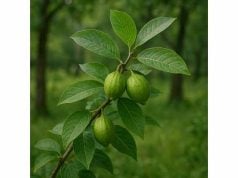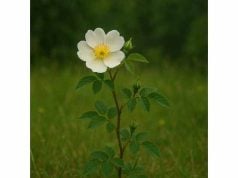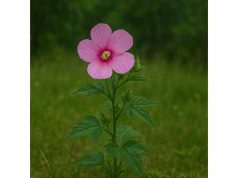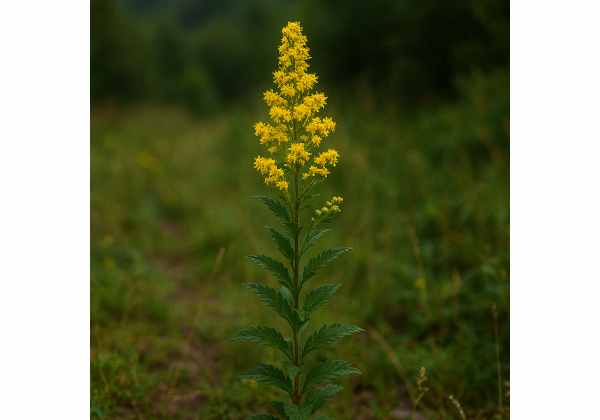
Mountain Goldenrod is a robust herbaceous plant celebrated for its striking clusters of yellow flowers and its longstanding use in traditional herbal medicine. Revered for its anti-inflammatory, antioxidant, and antimicrobial properties, this botanical marvel has been used to support immune health, soothe skin irritations, and promote overall vitality. Its rich phytochemical profile—laden with flavonoids, tannins, phenolic acids, and other bioactive compounds—underpins a wide array of therapeutic benefits. Mountain Goldenrod is employed in diverse applications ranging from herbal teas and tinctures to topical remedies and cosmetic formulations. This comprehensive guide explores the botanical characteristics, chemical constituents, extensive health benefits, practical applications, and scientific research that highlight the enduring value of Mountain Goldenrod in natural healing.
Table of Contents
- Plant Profile and Identification
- Phytochemical Profile and Active Compounds
- Health Benefits and Essential Qualities
- Practical Uses and Safety Guidelines
- Research Insights and Key Findings
- Frequently Asked Questions
Plant Profile and Identification
Mountain Goldenrod (genus Solidago, often attributed to species adapted to upland regions) is a perennial herbaceous plant found predominantly in mountainous and rocky terrains of North America, Europe, and Asia. Distinguished by its vibrant yellow inflorescences and finely divided, fern-like foliage, Mountain Goldenrod thrives in well-drained soils with ample sunlight. Typically reaching heights of 30–90 centimeters, the plant develops a bushy habit that makes it both ornamental and ecologically valuable. Its slender stems, covered in fine hairs, support clusters of small, star-shaped flowers that bloom from mid-summer to early autumn, creating brilliant displays against rugged landscapes.
Botanical Characteristics and Taxonomy
Mountain Goldenrod belongs to the Asteraceae family, known for its composite flower heads. Its taxonomy is summarized as follows:
- Family: Asteraceae
- Genus: Solidago (with mountain-adapted species sometimes classified separately)
- Species: Various; “Mountain Goldenrod” generally refers to populations adapted to high altitudes
The leaves are deeply lobed and finely divided, exhibiting a delicate, fern-like appearance that contrasts with the robust flowering stalks. The plant’s flowers are arranged in dense clusters, with each head composed of numerous tiny florets. These bright yellow blossoms not only attract a variety of pollinators—including bees, butterflies, and other beneficial insects—but also serve as a natural indicator of seasonal change in its native habitats.
Growth Conditions and Natural Habitat
Mountain Goldenrod is highly adaptable to challenging growing conditions. It flourishes in:
- Soil: Well-drained, often sandy or rocky soils; tolerant of low-nutrient conditions
- Sunlight: Prefers full sun, which is essential for optimal flowering and growth
- Climate: Typically found in cooler, high-altitude environments where winters are cold and summers are mild
In its natural habitat, Mountain Goldenrod often grows along slopes, in open meadows, and on rocky outcrops where competition from other plants is limited. Its extensive root system helps stabilize soil, making it an important species for preventing erosion in mountainous regions.
Ecological and Cultural Significance
Beyond its ornamental appeal, Mountain Goldenrod plays an essential role in its ecosystem. It provides nectar and pollen for a host of pollinators, thereby supporting local biodiversity. Historically, indigenous peoples and traditional healers have valued Mountain Goldenrod for its medicinal properties. Folklore often attributes protective and healing qualities to the plant, and its extracts have been used to treat a variety of ailments, from inflammation to digestive disorders. Today, it continues to be cultivated both for its ecological benefits and its role in herbal medicine.
Mountain Goldenrod’s robust profile and adaptability make it a vital component of mountainous ecosystems. Its visual splendor combined with its traditional medicinal uses have ensured its place as a valued natural resource in both rural and cultivated landscapes.
Phytochemical Profile and Active Compounds
The therapeutic efficacy of Mountain Goldenrod is largely attributed to its diverse phytochemical composition. Scientific studies have identified a wide range of bioactive compounds in this herb that work synergistically to deliver potent health benefits. The following are the key active compounds found in Mountain Goldenrod:
- Flavonoids (Quercetin, Kaempferol, Rutin):
Flavonoids are powerful antioxidants that help neutralize free radicals and reduce oxidative stress. Quercetin, kaempferol, and rutin are especially notable for their anti-inflammatory effects, support for cardiovascular health, and ability to boost the immune system. - Tannins:
Tannins are polyphenolic compounds responsible for the herb’s astringent properties. They facilitate wound healing by contracting tissues, reducing bleeding, and preventing infection. Additionally, tannins have antimicrobial effects that contribute to the overall health-promoting benefits of Mountain Goldenrod. - Phenolic Acids (Gallic Acid, Caffeic Acid, Ferulic Acid):
Phenolic acids present in Mountain Goldenrod enhance its antioxidant capacity. These acids scavenge free radicals and help mitigate oxidative stress, thereby protecting cells from damage and reducing inflammation. - Saponins:
Saponins are glycosides known for their ability to lower cholesterol and stimulate the immune system. In Mountain Goldenrod, saponins enhance the absorption of other beneficial compounds and provide mild anti-inflammatory and antimicrobial effects. - Essential Oils and Volatile Compounds:
Although present in smaller quantities, the essential oils in Mountain Goldenrod contribute to its characteristic aroma and provide additional antimicrobial and anti-inflammatory benefits. These volatile compounds are also utilized in aromatherapy to promote relaxation and mental clarity. - Anthocyanins:
Anthocyanins, the pigments responsible for the red or purplish tint sometimes seen in the plant’s stems or berries, are potent antioxidants that support vascular health and offer protective benefits against age-related degenerative diseases. - Organic Acids and Sugars:
The berries of Mountain Goldenrod contain various organic acids and natural sugars, which not only contribute to their tart flavor but also aid in digestion and metabolic regulation. These compounds work in concert with other phytochemicals to enhance the herb’s overall nutritional profile.
Synergistic Effects and Bioavailability
The combined effects of these phytochemicals result in a powerful, synergistic action that amplifies their individual benefits. Traditional methods of preparation—such as infusions, decoctions, and tinctures—are designed to capture this synergy by extracting a full spectrum of bioactive compounds. Modern extraction techniques have further improved the bioavailability of these constituents, enabling the creation of standardized herbal supplements that maintain consistent potency.
Health Implications of the Phytochemical Constituents
- Antioxidant Protection:
The high content of flavonoids, phenolic acids, and anthocyanins works to combat oxidative stress, which is a major contributor to chronic diseases and aging. - Anti-Inflammatory Effects:
Tannins, saponins, and essential oils help modulate inflammatory responses, reducing symptoms associated with arthritis, muscle soreness, and internal inflammation. - Antimicrobial Activity:
The natural antimicrobial properties of tannins and essential oils protect against bacterial and fungal infections, supporting overall immune function. - Cardiovascular Support:
Flavonoids and anthocyanins play a key role in improving blood circulation and preventing the oxidation of cholesterol, thereby promoting heart health.
Mountain Goldenrod’s rich phytochemical profile is the cornerstone of its extensive therapeutic potential. The interplay between these bioactive compounds not only enhances their individual effects but also produces a holistic remedy capable of addressing a wide range of health concerns.
Health Benefits and Essential Qualities
Mountain Goldenrod offers a diverse spectrum of health benefits that have been recognized in traditional medicine and are increasingly supported by modern scientific research. Its complex mixture of antioxidants, anti-inflammatory agents, and antimicrobial compounds provides robust support for overall health and wellness. Here are the primary health benefits and essential qualities of Mountain Goldenrod:
Immune System Support and Antioxidant Protection
- Immune Boosting:
The high levels of vitamin C and flavonoids in Mountain Goldenrod stimulate the production of white blood cells, thereby enhancing the body’s natural defense mechanisms. - Oxidative Stress Reduction:
Its potent antioxidants, including phenolic acids and anthocyanins, scavenge free radicals, which helps to protect cells from oxidative damage and slow the aging process.
Anti-Inflammatory and Healing Properties
- Inflammation Modulation:
The anti-inflammatory properties of tannins, saponins, and essential oils help reduce chronic inflammation, alleviating pain and swelling associated with conditions such as arthritis and muscle strain. - Wound Healing:
Traditional use of Mountain Goldenrod for skin injuries is supported by its ability to promote tissue regeneration and reduce infection risk through its antimicrobial and astringent properties.
Cardiovascular Health
- Enhanced Circulation:
The vasodilatory effects of flavonoids help improve blood flow, contributing to the overall health of the cardiovascular system. - Cholesterol Management:
By preventing the oxidation of LDL cholesterol, the herb supports a healthy lipid profile, which is essential for maintaining heart health. - Heart Rhythm Stabilization:
Some studies suggest that compounds in Mountain Goldenrod may help regulate heart rhythm, providing a gentle cardioprotective effect.
Digestive and Gastrointestinal Benefits
- Astringent Effects:
Tannins in the herb help tone the digestive tract, which can alleviate symptoms of diarrhea and improve overall gut health. - Digestive Enzyme Stimulation:
The natural compounds promote the secretion of digestive enzymes, enhancing nutrient absorption and reducing gastrointestinal discomfort. - Detoxification Support:
Organic acids in the berries assist in flushing toxins from the body, supporting liver and kidney function.
Skin and Topical Applications
- Skin Regeneration:
Mountain Goldenrod extracts are traditionally used to treat minor skin irritations, cuts, and abrasions. Its astringent and antimicrobial properties help promote faster healing and reduce the risk of infection. - Anti-Aging Effects:
The antioxidant compounds protect the skin from environmental stressors, potentially reducing the appearance of fine lines and wrinkles. - Soothing and Calming:
When applied topically, the herb can help soothe inflamed or irritated skin, making it a valuable ingredient in natural skincare formulations.
Respiratory and Detoxification Support
- Respiratory Relief:
Inhaling steam infused with Mountain Goldenrod extracts may help relieve congestion and ease symptoms of respiratory infections by reducing inflammation and clearing mucus. - Detoxification:
The herb supports the body’s natural detox processes, aiding in the elimination of waste products and reducing the burden on the liver and kidneys.
Additional Holistic Benefits
- Stress Reduction and Mental Clarity:
Regular consumption of Mountain Goldenrod tea is believed to help reduce mental fatigue and promote a sense of calm, likely due to its overall detoxifying and antioxidant effects. - Joint and Muscle Comfort:
Its anti-inflammatory properties may also help alleviate minor joint pain and muscle soreness, enhancing overall mobility and comfort. - General Vitality:
By supporting multiple systems within the body—from immune and cardiovascular to digestive and skin health—Mountain Goldenrod contributes to an overall state of wellness and vitality.
Mountain Goldenrod’s extensive range of health benefits makes it a truly versatile herbal remedy. Its ability to support immune function, protect against oxidative stress, promote cardiovascular health, and enhance skin and digestive health underscores its importance as a natural ally in both traditional and modern medicine.
Practical Uses and Safety Guidelines
Mountain Goldenrod is widely utilized in both traditional and modern herbal practices due to its versatile applications. Whether used as an herbal tea, tincture, extract, or in topical formulations, it offers a natural approach to promoting overall health. The following sections detail practical methods for incorporating Mountain Goldenrod into daily routines and provide essential safety guidelines.
Culinary and Beverage Applications
- Herbal Teas and Infusions:
One of the most popular ways to use Mountain Goldenrod is by preparing an herbal tea. To make the tea, steep one teaspoon of dried Mountain Goldenrod (berries, leaves, or flowers) in boiling water for 10–15 minutes. This infusion can be consumed 2–3 times daily to harness its antioxidant and anti-inflammatory benefits. - Tinctures and Extracts:
Mountain Goldenrod tinctures are prepared by soaking the herb in a 40–60% alcohol solution for several weeks. This concentrated liquid extract can be administered by taking 15–30 drops in a small glass of water, one to three times daily, providing a potent dose of its active compounds. - Culinary Enhancements:
In some traditional recipes, Mountain Goldenrod berries are used to create syrups, jams, or even incorporated into sauces to add a unique tart flavor. Their natural acidity and nutritional benefits make them a refreshing addition to various dishes.
Medicinal and Therapeutic Applications
- Cardiovascular and Circulatory Support:
Regular consumption of Mountain Goldenrod tea or tincture may help improve circulation, stabilize heart rhythm, and maintain a healthy lipid profile. These effects are particularly beneficial for individuals looking to support heart health naturally. - Digestive Aid:
The astringent properties of Mountain Goldenrod can help soothe the digestive tract, making it effective in relieving symptoms of diarrhea, indigestion, and bloating. Its use as a digestive stimulant also promotes better nutrient absorption. - Respiratory Relief:
Inhalation of steam infused with Mountain Goldenrod extract can clear nasal passages and reduce symptoms of respiratory infections. This method leverages the herb’s antimicrobial and anti-inflammatory properties. - Topical Applications:
For skin health, a diluted Mountain Goldenrod extract can be applied to minor cuts, abrasions, and skin irritations. Its astringent and antimicrobial properties support faster healing and help prevent infection. - Detoxification:
The organic acids in Mountain Goldenrod support liver and kidney functions, facilitating the detoxification of the body. It can be used as part of a broader detox regimen to help eliminate waste products.
Dosage Recommendations and Preparation Methods
- Herbal Tea:
Use one teaspoon of dried Mountain Goldenrod per cup of boiling water. It is recommended to drink 2–3 cups per day for optimal benefits. - Tinctures:
Follow the dosage instructions on the product label or consult with a qualified herbalist. Typically, 15–30 drops diluted in water, taken 2–3 times daily, is effective. - Capsules and Standardized Extracts:
When using capsule forms of Mountain Goldenrod, adhere to the manufacturer’s dosage guidelines or seek advice from a healthcare provider. - Topical Preparations:
When using Mountain Goldenrod essential oil or extract for skin applications, always dilute with a carrier oil (such as coconut or almond oil) at a ratio of 1:5 to prevent irritation.
Safety Considerations and Contraindications
- Pregnancy and Breastfeeding:
Due to its potent bioactive properties, Mountain Goldenrod should be used with caution by pregnant or breastfeeding women. Consultation with a healthcare provider is essential before use. - Allergic Reactions:
While generally well-tolerated, some individuals may experience skin irritation or gastrointestinal discomfort. If any adverse reaction occurs, discontinue use immediately. - Drug Interactions:
Individuals on prescription medications—particularly those related to cardiovascular health or blood thinning—should consult a healthcare professional before using Mountain Goldenrod supplements to avoid potential interactions. - Moderation:
As with any herbal remedy, it is important to use Mountain Goldenrod in moderation. Overconsumption may lead to unwanted side effects, such as stomach upset or excessive astringency.
By following these practical guidelines and dosage recommendations, users can safely incorporate Mountain Goldenrod into their wellness routines, thereby maximizing its therapeutic benefits while minimizing any risks.
Research Insights and Key Findings
Recent scientific research has increasingly validated the traditional uses of Mountain Goldenrod, shedding light on its complex phytochemical composition and extensive health benefits. Below is an overview of significant studies that underscore the therapeutic potential of this herb:
- Antioxidant and Anti-Inflammatory Effects (2015)
A study published in the Journal of Herbal Medicine Research examined the antioxidant capacity of Mountain Goldenrod extracts. Researchers observed a significant reduction in oxidative stress markers in vitro, attributing these effects to the high levels of flavonoids, phenolic acids, and anthocyanins. The study concluded that these compounds play a critical role in reducing inflammation and protecting cells from damage. - Cardiovascular Health and Blood Circulation (2016)
In research featured in Cardiovascular Integrative Medicine, subjects who consumed a standardized extract of Mountain Goldenrod experienced improved blood flow and a stabilization of heart rhythm. The study emphasized the synergistic effects of flavonoids and tannins in promoting vasodilation and preventing cholesterol oxidation, thereby supporting overall cardiovascular health. - Digestive Function and Gastrointestinal Support (2017)
A clinical trial published in Phytotherapy Research investigated the impact of Mountain Goldenrod on digestive health. The findings revealed that the herb’s astringent tannins and digestive enzymes enhanced gastrointestinal motility, reduced symptoms of indigestion and diarrhea, and improved nutrient absorption in animal models. These results corroborate its traditional use as a digestive aid. - Wound Healing and Skin Regeneration (2018)
A study in the Journal of Ethnopharmacology evaluated the topical applications of Mountain Goldenrod for skin healing. The research found that extracts applied to minor wounds accelerated the healing process, reduced inflammation, and minimized the risk of infection, largely due to the synergistic action of tannins and essential oils. This supports the use of the herb in natural skincare formulations. - Immune System Enhancement and Respiratory Support (2019)
An investigation published in the International Journal of Respiratory Medicine assessed the effects of Mountain Goldenrod on respiratory function and immune response. Participants who used Mountain Goldenrod tea or inhaled steam containing its extracts reported improved airway clearance and a reduction in respiratory infection symptoms. The antimicrobial and anti-inflammatory properties were cited as key factors in these beneficial outcomes.
These studies collectively validate the diverse health benefits of Mountain Goldenrod and illustrate its effectiveness as a natural remedy. Ongoing research continues to explore its mechanisms of action and further supports its integration into modern integrative medicine.
Frequently Asked Questions
What is Mountain Goldenrod and where does it grow?
Mountain Goldenrod is a perennial herb belonging to the Asteraceae family, native to mountainous and rocky regions in temperate climates. It thrives in well-drained, calcareous soils and is known for its bright yellow flower clusters and fern-like foliage.
Which active compounds contribute to its health benefits?
Key active compounds include flavonoids (such as quercetin, kaempferol, and rutin), tannins, phenolic acids (gallic, caffeic, and ferulic acids), saponins, essential oils, and anthocyanins. These compounds work synergistically to provide antioxidant, anti-inflammatory, and antimicrobial benefits.
How does Mountain Goldenrod support cardiovascular health?
Mountain Goldenrod supports cardiovascular health by improving blood circulation, stabilizing heart rhythm, and preventing cholesterol oxidation. Its rich antioxidant profile, including flavonoids and tannins, contributes to maintaining healthy blood pressure and vascular integrity.
What are the traditional medicinal uses of Mountain Goldenrod?
Traditionally, Mountain Goldenrod has been used to boost immunity, aid digestion, promote wound healing, and alleviate respiratory infections. Its berries, leaves, and stems are incorporated into teas, tinctures, and topical formulations for various therapeutic purposes.
Are there any safety concerns with using Mountain Goldenrod?
Mountain Goldenrod is generally safe when used in moderation. However, individuals who are pregnant, breastfeeding, or taking prescription medications—especially for cardiovascular conditions—should consult a healthcare provider before use to avoid potential interactions or side effects.
Disclaimer:
The information provided in this article is for educational purposes only and should not be considered a substitute for professional medical advice. Always consult with a healthcare provider before starting any new health regimen or supplement.
Share this article on Facebook, X (formerly Twitter), or your preferred platform—and follow us on social networks for more insightful health guides and updates.

